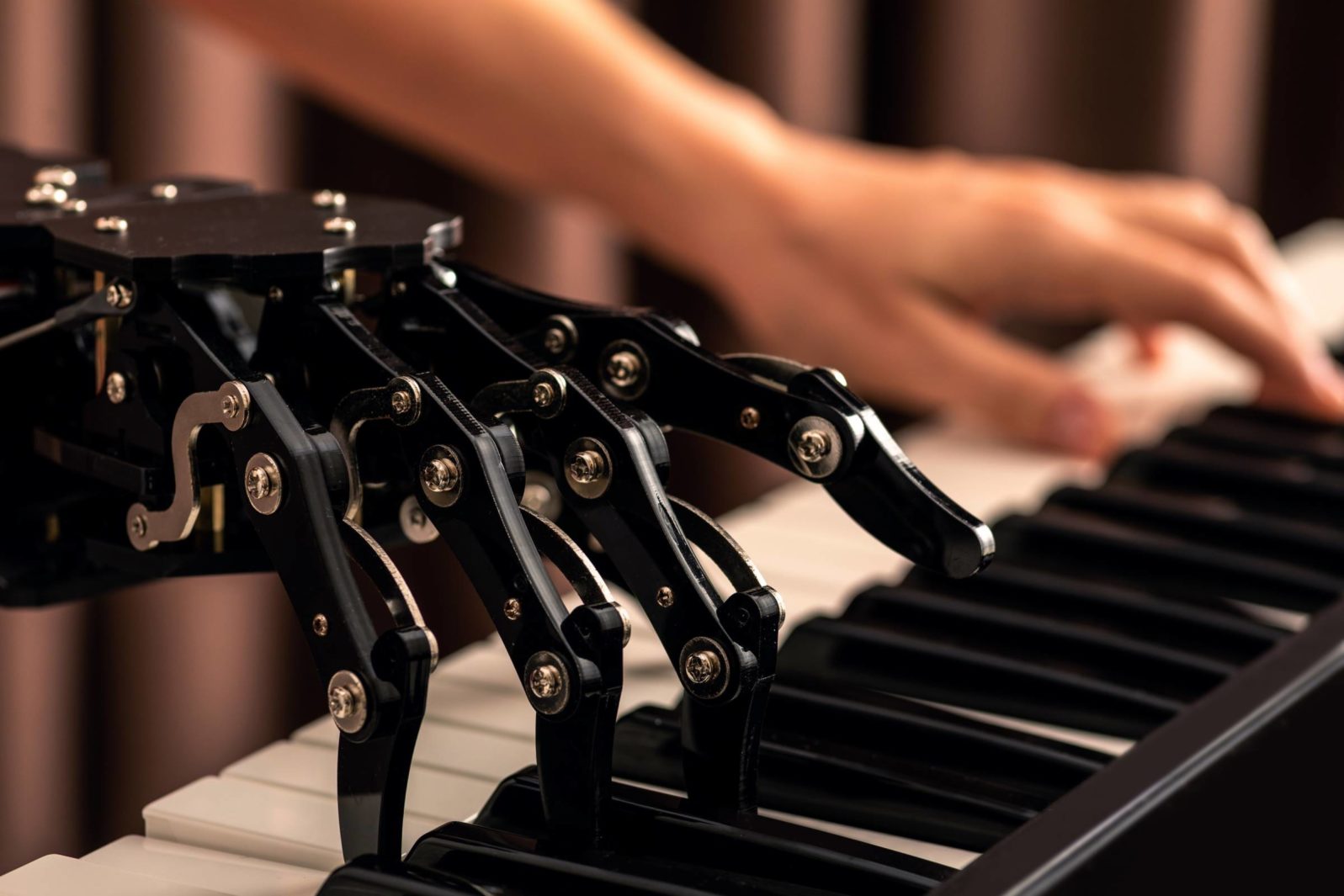Bionic Hands? Not An Improvement on Mechanical Hooks!, Says User
Right now, says a woman born without a left hand, electronic prostheses don’t function as well as mechanical extensionsWriting in the engineering journal IEEE Spectrum, Britt H. Young looks at bionics from the perspective of
a user. Her left forearm failed to develop prenatally. She offers a number of concerns about the direction of bionics, especially the expense of bionic limbs and their difficulty of use compared to simpler prostheses:

Today, the people who design prostheses tend to be well-intentioned engineers rather than amputees themselves. The fleshy stumps of the world act as repositories for these designers’ dreams of a high-tech, superhuman future. I know this because throughout my life I have been fitted with some of the most cutting-edge prosthetic devices on the market. After being born missing my left forearm, I was one of the first cohorts of infants in the United States to be fitted with a myoelectric prosthetic hand, an electronic device controlled by the wearer’s muscles tensing against sensors inside the prosthetic socket. Since then, I have donned a variety of prosthetic hands, each of them striving toward perfect fidelity of the human hand—sometimes at a cost of aesthetics, sometimes a cost of functionality, but always designed to mimic and replace what was missing.
Britt H. Young, “The bionic-hand arms race” at IEEE Spectrum (August 21, 2022)
And how did that work out? The limbs got more sophisticated and more expensive but…
My 21st-century myoelectric hand seemed remarkable — until I tried using it for some routine tasks, where it proved to be more cumbersome and time consuming than if I had simply left it on the couch. I couldn’t use it to pull a door shut, for example, a task I can do with my stump. And without the extremely expensive addition of a powered wrist, I couldn’t pour oatmeal from a pot into a bowl. Performing tasks the cool bionic way, even though it mimicked having two hands, wasn’t obviously better than doing things my way, sometimes with the help of my legs and feet.
Britt H. Young, “The bionic-hand arms race” at IEEE Spectrum (August 21, 2022)
Most clientele for prosthetic hands have lost (or have missed) only one hand. They commonly use other body parts, as Young tells readers she does, to partner with the remaining hand. Any prosthesis, to be effective, must offer more than an easy (free) fix like that. A study by prosthetics researcher Ad Spiers and his colleagues found, in her words, that
For body-powered prosthetic users whose amputation was below the elbow, nearly 80 percent of prosthesis usage was nongrasping movement—pushing, pressing, pulling, hanging, and stabilizing. For myoelectric users, the device was used for grasping just 40 percent of the time.
More tellingly, body-powered users with nonelectric grippers or split hooks spent significantly less time performing tasks than did users with more complex prosthetic devices. Spiers and his team noted the fluidity and speed with which the former went about doing tasks in their homes.
Britt H. Young, “The bionic-hand arms race” at IEEE Spectrum (August 21, 2022)
The researchers write,
Our analysis included unique observations on non-prehensile manipulations occurrence, determining that 79% of transradial body-powered device manipulations were non-prehensile, compared to 60% for transradial myoelectric devices. Conversely, only 16-19% of intact limb activity was non-prehensile. Additionally, multi-grasp terminal devices did not lead to increased activity compared to 1DOF devices.
A. J. Spiers, J. Cochran, L. Resnik and A. M. Dollar, “Quantifying Prosthetic and Intact Limb Use in Upper Limb Amputees via Egocentric Video: An Unsupervised, At-Home Study,” in IEEE Transactions on Medical Robotics and Bionics, vol. 3, no. 2, pp. 463-484, May 2021, doi: 10.1109/TMRB.2021.3072253. The paper requires a fee or subscription.
So the big challenge in prosthetics is grasping things with the right amount of pressure. Most of us rely on sensation for that. Giving a lifeless appendage feeling is bound to be very difficult.
Some prosthetists choose the mechanical approach instead:
TRS, based in Boulder, Colo., is one of the few manufacturers of activity-specific prosthetic attachments, which are often more durable and more financially accessible than robotic prosthetics. These plastic and silicone attachments, which include a squishy mushroom-shaped device for push-ups, a ratcheting clamp for lifting heavy weights, and a concave fin for swimming, have helped me experience the greatest functionality I have ever gotten out of a prosthetic arm.
Such low-tech activity prostheses and body-powered prostheses perform astonishingly well, for a tiny fraction of the cost of bionic hands. They don’t look or act like human hands, and they function all the better for it.
Britt H. Young, “The bionic-hand arms race” at IEEE Spectrum (August 21, 2022)
Here’s a non-robotic device in action, used with the living hand:
Often, such sophisticated mechanical prostheses are designed for specific purposes:
But if multiple devices are required, affordability becomes even more important.
Young refines the questions around bionics admirably. The bionics researcher is pitting electronics against — not only living nature — but also non-living nature co-opted by living nature. Can electronics compete? Co-opting electronics would need to be as natural and affordable to the average human as simply co-opting mechanics. That — not technological sophistication — is where the bar is set.
You may also wish to read: The Bionic Man was science fiction; the bionic hand is not. A recent internet-savvy bionic hand, developed by an American neuroscientist and computer engineer, is the most flexible yet, with sensory feedback. The trouble is, if the new bionic hands are going to help most of the world’s amputees , they can’t cost six million dollars, as in the old TV show.
